Sennheiser isn’t new to the high-end wireless game, but the new HDB 630 Wireless Headphones show up ready for a fight — and not an easy one. Priced at $499 USD, they’re stepping straight into a cage match with the Sony WH-1000XM6, Bose QuietComfort Ultra, Apple AirPods Max, and Bowers & Wilkins Px7 S3. On paper, Sennheiser’s bringing the right ammo: 24-bit/96kHz playback, aptX Adaptive, active noise cancellation, and the handy BTD 700 USB dongle for plug-and-play hi-res listening.
The question is whether that’s enough to make anyone look away from the current heavyweights. The short answer? Mostly, yes. The HDB 630 delivers the kind of clarity, spaciousness, and detail that audiophiles actually notice — and it does it without the usual “luxury lifestyle” fluff. Borrowing the MOMENTUM 4’s proven chassis but outfitted with custom drivers and tuning from Sennheiser’s Tullamore, Ireland facility, this is a headphone that sounds better than most in the category.
Sennheiser finally seems to be paying attention to what the competition’s been doing — and it shows. The build quality is tighter, the materials feel more substantial, and the comfort is dialed in for long sessions.
No, it doesn’t have the luxury finish of the Bowers & Wilkins Px7 S3 or Px8 S2 I just reviewed, but it’s definitely a cut above Sony and Bose in both feel and presence. The Apple faithful probably won’t ditch their pastel AirPods Max for something this understated, but that’s fine — the HDB 630 isn’t chasing trends; it’s here for listeners who actually care how their music sounds.
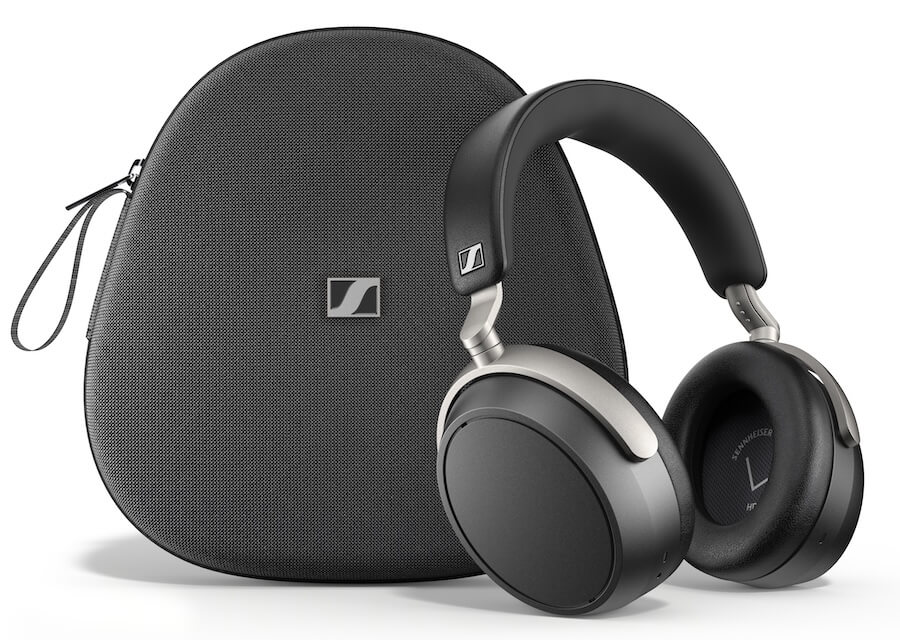
Sennheiser HDB 630 Comfort, Battery Life, and Accessories
Sennheiser has clearly thought through the HDB 630 experience beyond just sound. They promise up to 60 hours of battery life with a quick-charge mode that delivers roughly 7 hours in 10 minutes, but let’s talk real-world numbers. That 60-hour figure looks great on paper, but in practice I averaged 53 to 54 hours, depending on volume and what I was feeding the cans.
My iPhone 14 and iPhone X chewed through battery a bit faster, while a borrowed Samsung came closer to 58 hours—though streaming Qobuz and TIDAL hi-res dragged that down a notch. ANC on versus off didn’t devastate the numbers, but users should expect 51 to 52 hours with ANC engaged all the time and when set to above average listening levels.
Bottom line, I could get almost an entire week of commuting out of a single charge, and that’s enough for just about anyone schlepping through trains, buses, or the occasional “I swear this will be a short walk to Wawa” neighborhood stroll. For anyone who treats their headphones like a daily workhorse rather than a delicate audio toy, the HDB 630’s stamina is more than sufficient—and let’s be honest, that’s the part that actually matters when your train is late for the third time this week.
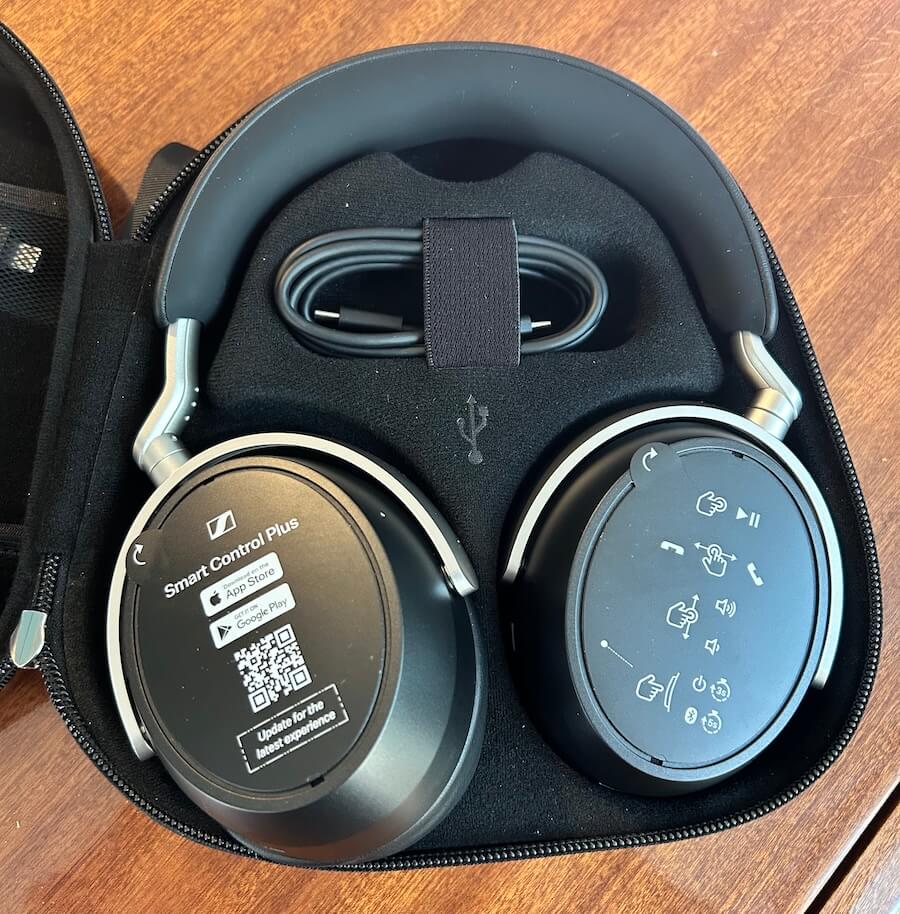
They fold flat for travel, though they are definitely bulkier than the Bowers & Wilkins Px7 S3 or Px8 S2. At 311 grams (11 oz), the weight is very manageable. The clamping force is on the lighter side, less than the Bowers models, which had me a bit concerned as a large man who moves with purpose on public transit and has been known to use the shoulder when required—old ice hockey habits die hard. That said, they stayed put without incident, even on a walk-jog with Tyrion chasing squirrels. Westies don’t care about your premium wireless cans.
Comfort is treated seriously. The lightweight frame paired with Japanese Protein Leatherette ear cushions from IDEATEX is soft, breathable, and durable. The pads could be a touch firmer, and I did notice a bit of warmth after 30 minutes on NJ Transit, but nothing that ruined the experience.
Sennheiser also deserves credit for the travel case, which fits neatly into a laptop bag or knapsack. The internal layout, with a mesh pocket for cables and accessories, keeps everything organized and secure.
The supplied USB-C cable, 3.5mm analog cable, airline adapter, and BTD 700 USB-C Bluetooth dongle are all high quality. That dongle, in particular, is a major selling point and well worth the money if you plan to use a laptop or tablet that supports it. Everything comes together in a package that feels both premium and practical.
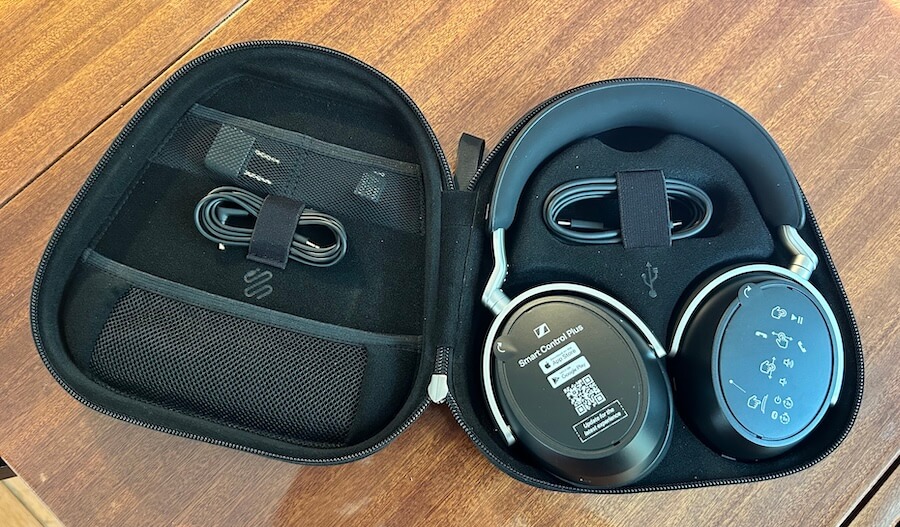
Adaptive Noise Cancellation That Works—Mostly
The HDB 630 combines a sealed design with Hybrid Adaptive ANC to keep the outside world to a murmur, while integrated microphones handle voice calls and transparency mode when you actually need to rejoin civilization. Specs-wise, that’s two MEMS microphones per side with beamforming for voice and noise reduction, plus above-average passive isolation.
In real-world testing, the results are solid but not class-leading. I tried everything from the backyard with my neighbor mowing a two-acre lot on his John Deere, to NJ Transit commutes to Princeton, to watching the ALCS in the bathroom (don’t judge) on my iPhone, and even working in a busy coffee shop in Asbury Park. Human voices are still more noticeable than with the Bowers & Wilkins Px7 S3 and Px8 S2, though the mower, train rumble, and general hubbub were reduced substantially.
ANC improves the isolation, but compared to its British rivals, the Sennheiser doesn’t quite make the outside world disappear—though it does enough to let you actually enjoy your music.
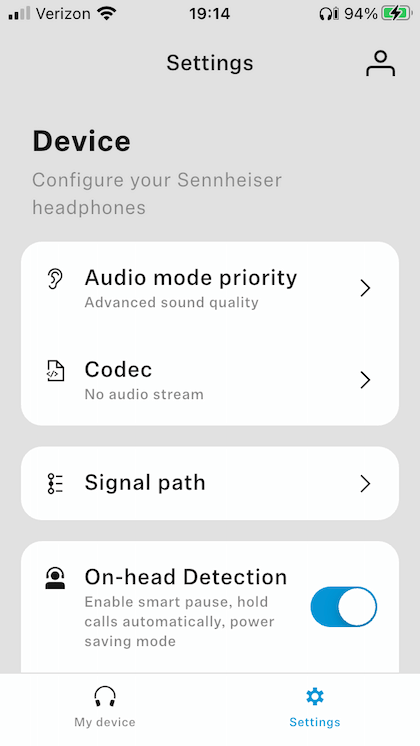
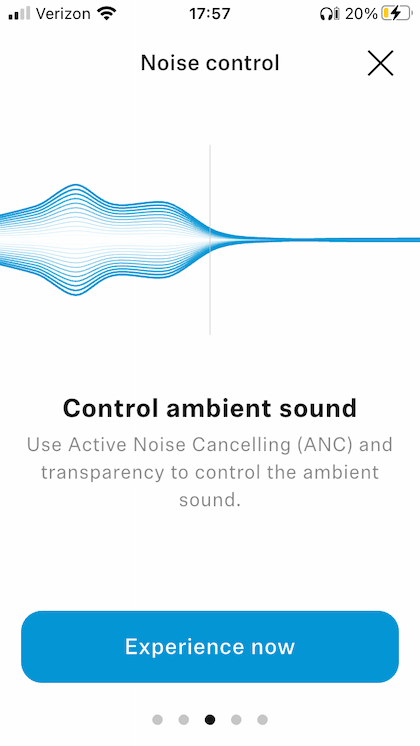
One of the big wins for Sennheiser here is the Smart Control app, which blows the Bowers control app out of the water. You’re not stuck with a binary choice of full ANC or transparency mode—here you can dial in the level of noise cancellation, and it actually works. Even better, the ANC does very little damage to the sound, which is a rare feat. Sure, you’ll notice a subtle drop in clarity and detail on some tracks, and the wide soundstage tightens up just a bit, but nothing catastrophic.
Personally, I’ve never been an ANC fan—I lean on passive isolation for most of my listening. But with the HDB 630, leaving ANC on for hours during a commute or a busy cafe session didn’t ruin the experience. If anything, it was pleasantly unobtrusive. That said, my preference still skews toward no ANC, where the headphones really shine in their natural, spacious sound. Sennheiser managed to make ANC tolerable without turning your premium music into a muffled mess, and for that alone, they deserve a nod.
Smart Control and EQ That Actually Make a Difference
Sennheiser isn’t just tinkering with hardware on the HDB 630—they finally delivered a control app that’s genuinely useful. The updated Smart Control Plus app moves well beyond the tired genre presets and basic five-band EQs of the past, giving listeners real tools to shape their sound. In practice, it’s surprisingly intuitive and effective. I had to update the firmware on both the app and the BTD 700 dongle, which took just a few minutes and a quick reboot of the headphones—both worked flawlessly.
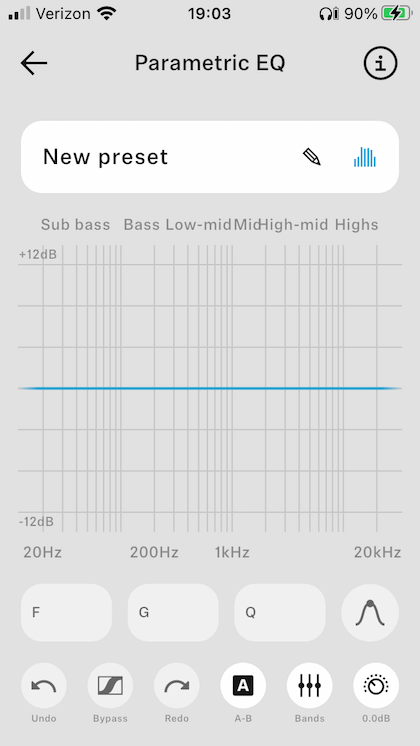
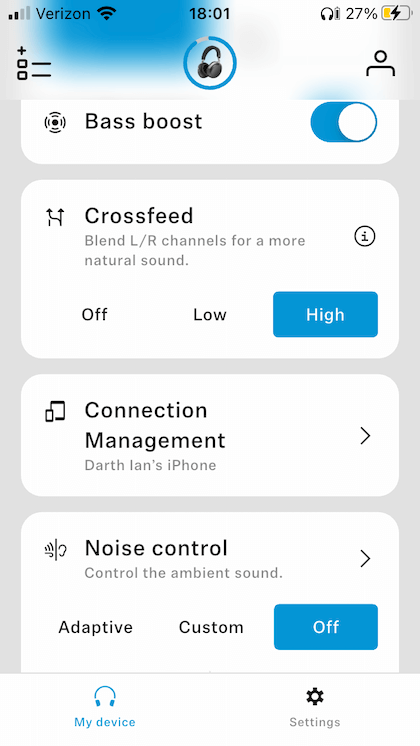
The Parametric EQ is the real standout. You can boost or cut specific frequencies, adjust bandwidth (Q), choose filter types, and use an A/B toggle to compare settings. It’s the kind of flexibility you usually only see on studio gear, and it actually works in daily use.
I spent a lot of time in the Crossfeed and Bass Boost tabs. The Crossfeed had a noticeable impact, though not always a welcome one—it’s subtle, but you’ll hear it on older recordings that are mixed hard left and right. The Bass Boost, on the other hand, is genuinely effective, and I’ll get into why in the listening section.
Beyond EQ, the app also lets you tweak ANC, on-head detection, codec preference, and other intelligent features. There’s even the option to share your EQ presets with other HDB 630 users—and soon via QR code—so you can spread your frequency curves instead of cat memes. Unlike a lot of companion apps that sit gathering digital dust, Sennheiser’s actually gives you a reason to open it and fine-tune your listening experience.
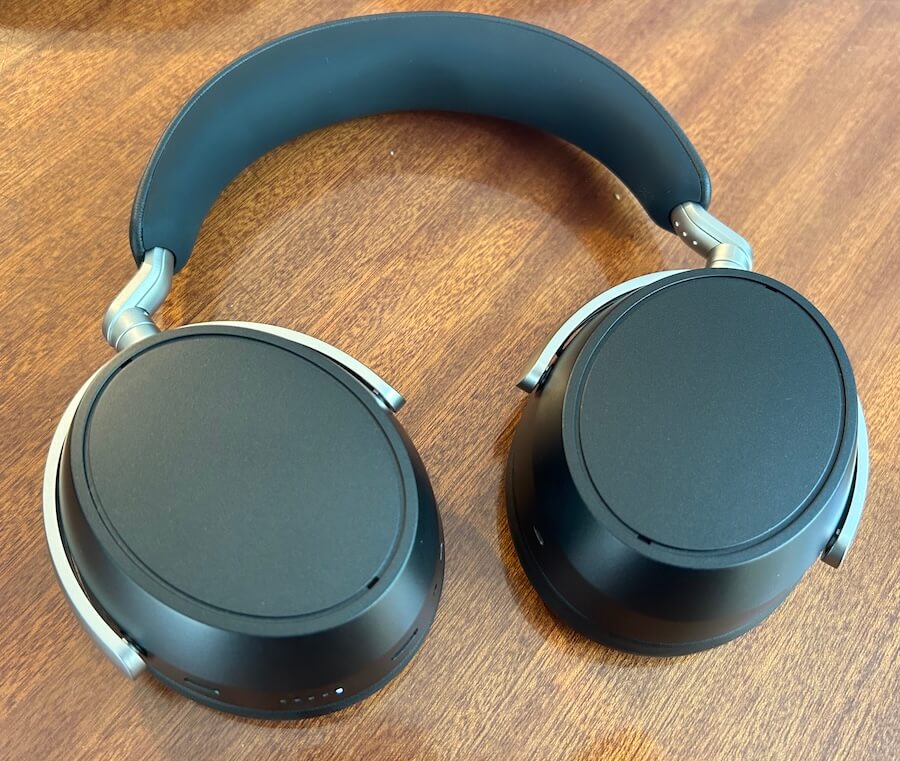
HDB 630 Physical Controls and Touch Sensors: Intuitive Playback or PITA?
Sennheiser keeps things mostly straightforward on the HDB 630 when it comes to physical controls. There’s a power button that also handles pairing—press and hold for three seconds to turn the headphones on or off, or five seconds to enter pairing mode. The right ear cup is home to the USB-C port for charging and direct connection to a source device, along with a 3.5mm input jack for those who still believe in wires.
Then there are the touch sensors, which I’ll admit up front I can’t stand. I’ve never been one for waving my fingers around on a headphone cup like I’m performing a magic trick, especially when my phone does it faster. That said, Sennheiser’s implementation actually works—and reliably.
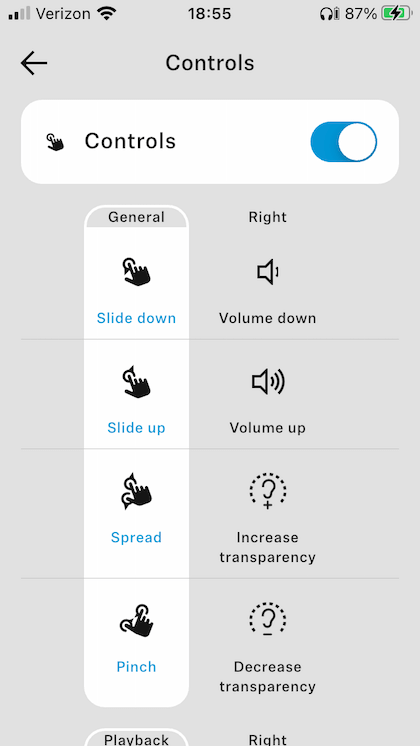
A single tap in the middle pauses or resumes playback, while sliding forward or backward skips tracks. Swiping up or down adjusts volume, and call control follows a similar pattern for answering or ending calls. For ANC, using two fingers and spreading them apart engages transparency mode.
The reality? It all functions as advertised. The other reality? I still find touch sensors to be a major pain, but your mileage may vary. To Sennheiser’s credit, they’ve kept it simple and confined to one ear cup, which helps avoid accidental input chaos. I’d still prefer real buttons, but given the limited real estate on modern wireless cans, this setup is about as painless as touch control gets.
Sennheiser HDB 630 Wireless Audio: True 24-Bit/96kHz Sound and Smarter Hi-Res Support
The HDB 630 isn’t just another Bluetooth headphone pretending to be “hi-res.” Its transducer system is driven by a high-resolution digital audio engine that works both wired and wirelessly. Taking a page from Bowers & Wilkins, Sennheiser now supports true 24-bit/96kHz playback via USB-C in addition to standard analog input—a long-overdue nod to listeners who still care about signal integrity. The headphones support Bluetooth 5.2 with aptX Adaptive, offering a nice balance between sound quality and connection stability.
Sennheiser also ships the BTD 700 USB-C transmitter dongle, which is a bigger deal than it sounds. Considering that only about 16% of smartphones can stream hi-res audio over Bluetooth out of the box, this dongle instantly expands compatibility to around 80% of devices—smart, practical, and actually useful. It’s the kind of accessory more manufacturers should include instead of leaving buyers to sort it out later.
Now, yes, some folks will gripe about the lack of LDAC, Bluetooth LE Audio, or aptX Lossless support at this price, and they’re not wrong. But it’s clear Sennheiser’s focus is on reliable cross-platform performance, not chasing codecs that most devices can’t fully exploit yet.
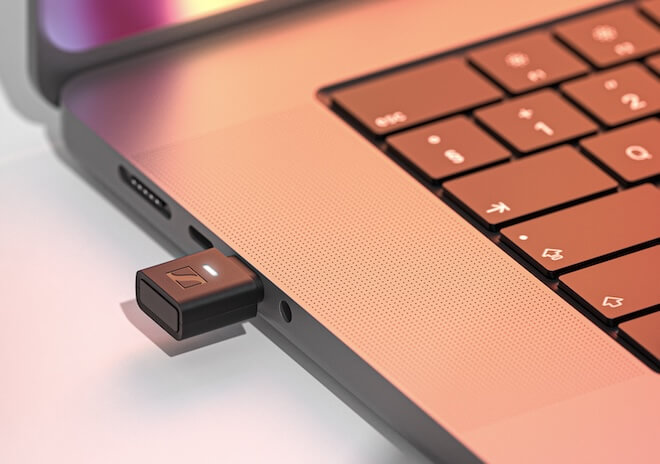
Sennheiser BTD 700 USB-C Dongle: The Bluetooth Fix You Didn’t Know You Needed
Sennheiser’s BTD 700 is a sleek, no-nonsense Bluetooth transmitter designed to solve the problem every wireless headphone user has learned to loathe—your laptop or phone’s built-in Bluetooth is usually a hot mess. At just 2.2 grams and 24mm long, it’s smaller than most flash drives but packs serious muscle: support for aptX Adaptive, aptX Lossless, LC3, Auracast, and even low-latency gaming modes, all wrapped in a plug-and-play USB-C package.
Setup couldn’t be simpler—just insert it into an open USB Type-C port and hit the pairing button. You can even toggle between LC3 and aptX codecs during streaming sessions. I did run into some early bugs that required a quick firmware update, but once patched, it performed flawlessly.
What makes the BTD 700 smart is that it’s class-compliant—no drivers, no nonsense. It completely bypasses your device’s mediocre Bluetooth hardware and takes over codec duties itself, streaming hi-res wireless audio up to 24-bit/96kHz. It’s compatible across Android, iOS, Windows, and macOS, thanks to Bluetooth 5.4, which future-proofs it nicely.
Now, about the iPhone question—since Apple still refuses to support aptX in any form, the BTD 700 steps in as an external Bluetooth transmitter. Your iPhone sees it as a USB DAC, sends regular digital audio through the Lightning-to-USB adapter, and the dongle does the heavy lifting—encoding and transmitting that audio over aptX Adaptive or Lossless to your headphones.
For now, the Sennheiser HDB 630 keeps things relatively grounded on the wireless front, supporting the following Bluetooth codecs: SBC, AAC, aptX, aptX HD, and aptX Adaptive. That’s a solid mix covering everything from basic compatibility (SBC, AAC) to higher-fidelity streaming (aptX HD and Adaptive).
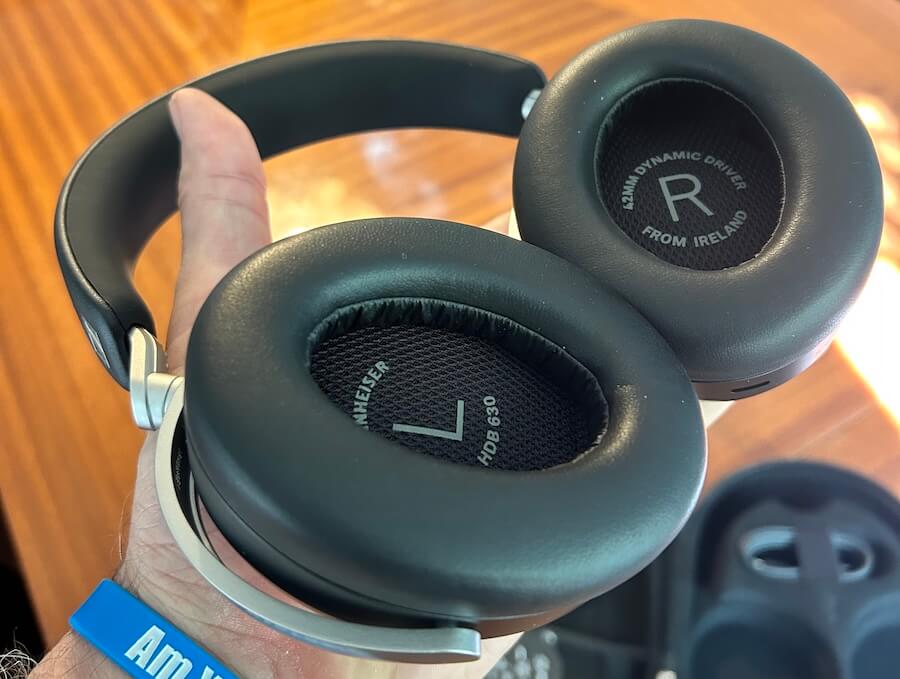
Listening Impressions: How the Sennheiser HDB 630 Sounds
After getting through setup, firmware updates, and a quick tour of the Control app, I decided to lob a few softballs at the HDB 630—Glen Campbell, Gotye, Daft Punk, Radiohead, and of course, Green Day. The Oakland trio who once made angst an art form have gone a bit sloppy in recent years, so I stuck with their prime years—from 21st Century Breakdown back to Dookie, when they still sounded hungry.
“21 Guns” came through with surprising spaciousness for a closed-back wireless design. When I switched over to “Jesus of Suburbia,” the Sennheiser’s strengths became clearer; clarity, detail, depth, and solid imaging. What’s missing? The chest-thumping low-end you get from the Px7 S3, Px8 S2, and other bass-boosted wireless cans. Sennheiser clearly made a different call here, dialing back the sub-bass in favor of a more balanced, midrange-focused presentation.
And honestly? I prefer it. The tonal balance feels intentional; less about shaking your skull, more about revealing texture and space. There’s still that faint wireless “haze” that creeps in with almost every Bluetooth headphone, but here it’s minimal enough to ignore. I can’t remember the last time I listened to Green Day for over an hour straight without wanting to skip a track, so that’s saying something.
Same deal with Glen Campbell’s “Wichita Lineman”—a track that’s been covered to death but never bettered. The streaming versions on TIDAL and Qobuz are… fine. But the vinyl? That’s where the real soul hides. The Sennheiser pushes Campbell’s voice slightly forward compared to the Bowers wireless models, with a bit less bite in the percussion, but the tradeoff is worth it; his guitar work comes through with greater clarity and precision, neatly placed within the soundstage.
Gotye’s “Somebody That I Used to Know” has apparently re-entered the cultural bloodstream—either that or my gym and every fast-food chain in America signed a secret licensing deal. I’ve heard it so many times lately I could probably hum the xylophone line in my sleep. Listening to it through the HDB 630, though, actually reminded me why the song hit so hard in the first place.
With bass boost engaged and the crossfeed flipped back and forth between off, low, and high, I was struck by just how clean and controlled the Sennheiser sounded. The top end stayed smooth and civilized; no splashy treble tantrums here—and while the sub-bass and mid-bass still felt a bit shy, the transparency, detail, and sense of space more than made up for it. It’s the kind of presentation that makes you forget how overplayed the track is—until, of course, you remember Daft Punk is up next, and that’s when the real fun begins.
Daft Punk’s “Get Lucky” and “Giorgio by Moroder” were just… fabulous—the kind of fabulous that makes you double-check you’re still in Bluetooth mode. These tracks showed off what the HDB 630 does best: crisp detail, a wide and open soundstage, and a midrange that feels alive and natural.
The low end isn’t going to rearrange your skull, so bass heads might move on, but the tonal balance is beautifully judged. The bass is there, just not trying to steal the show. It doesn’t hit with the same authority or definition as the British cans, but what it offers instead is rare for a closed-back wireless headphone—an almost open-back sense of space and air that’s genuinely addictive. You chase that kind of presentation, and suddenly two Daft Punk tracks turn into a full album before you realize it.
Three final tracks before we call it a day: Amy Winehouse’s “Valerie”, Paul Motian’s “I Have The Room Above Her”, and Nick Cave’s “Avalanche”. All three made it clear the HDB 630 plays a different game than the Bowers models. Cave’s vocals and piano carried enough weight to draw me in—the low registers aren’t as thunderous as the Px7 S3 or Px8 S2, but the overall engagement factor is higher.
Clarity and neutrality can be a double-edged sword if they strip the soul out of the music. Here, Cave’s grit wasn’t as in-your-face, but the piano was clean and present, and I didn’t feel like he was trying to crawl into my lap.
Winehouse didn’t shred the top of my ears despite the recording being a bit bright, which is a relief, and Motian’s drumming had genuine snap and soul. The horns and accompanying musicians were placed perfectly, making it easy to close my eyes and follow the interplay between them. That kind of intimate, focused listening experience is rare on wireless headphones, and the HDB 630 managed it effortlessly. Few wireless cans have pulled me into the music like this.
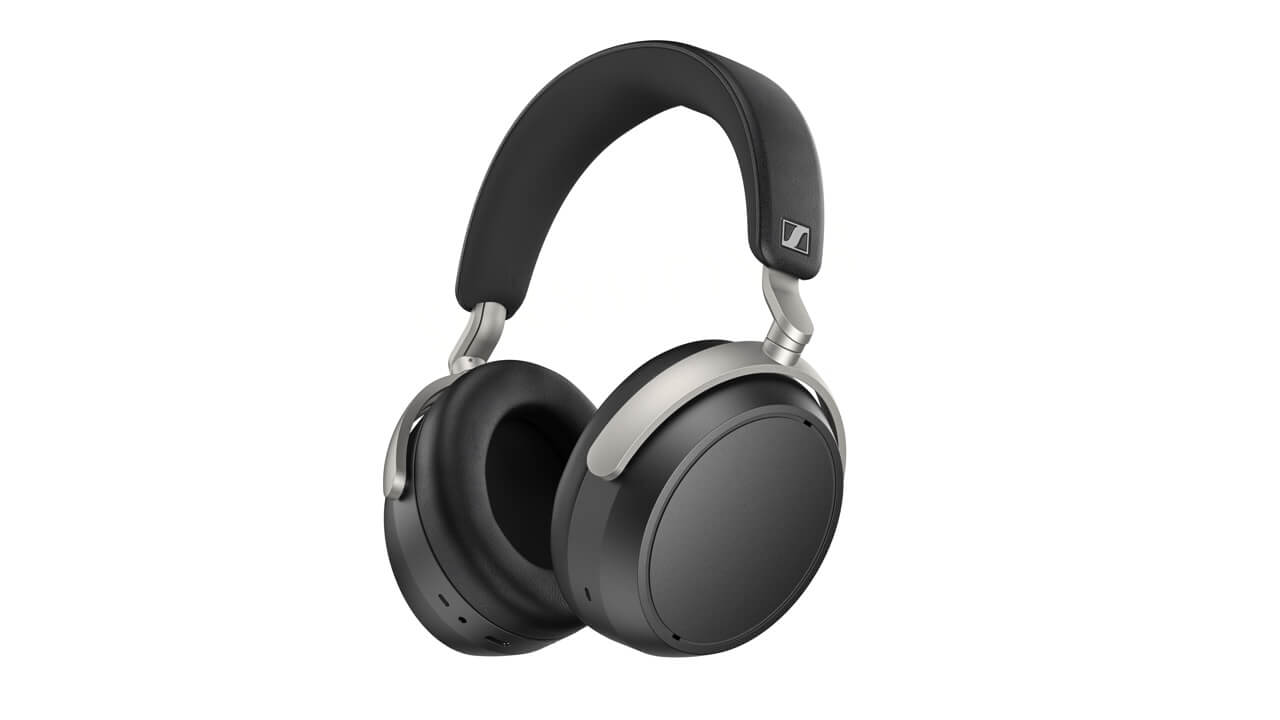
The Bottom Line
The Sennheiser HDB 630 stakes a serious claim in the high-end wireless headphone market. Built on a proven MOMENTUM 4 chassis, it delivers 24-bit/96kHz high-resolution playback, aptX Adaptive, and Hybrid Adaptive ANC, with a sealed design that offers above-average passive isolation. The included BTD 700 USB-C dongle is a standout, extending hi-res wireless support to devices that normally can’t handle it—a practical, well-executed solution that works across Android, iOS, Windows, and macOS. The Smart Control Plus app is surprisingly useful, offering a parametric EQ, crossfeed, and bass boost, along with ANC and on-head detection customization that actually improves the daily listening experience.
Strengths include exceptional clarity, midrange focus, spaciousness that approaches open-back levels, comfort, and long battery life that easily spans a full week of commuting. Tonally, Sennheiser favors upper bass and midrange precision over heavy sub-bass, which may disappoint bass heads but preserves detail and imaging. ANC is effective without noticeably compromising sound quality, though it’s not quite at the level of the Bowers & Wilkins Px7 S3/Px8 S2 in raw isolation.
Weaknesses? The touch controls are functional but clunky for anyone who prefers tactile buttons. Low-end impact is less pronounced than on some competitors, and passive isolation can’t match the British rivals. The headphone is slightly bulkier than the Bowers models and the ear pads can get warm over longer sessions.
What makes the HDB 630 unique is its combination of hi-res wireless fidelity, thoughtful accessories, and practical real-world tech—particularly the dongle, app, and EQ flexibility. It doesn’t chase every shiny codec under the sun, but it delivers consistent, well-balanced performance that emphasizes clarity, detail, and musical engagement over gimmicks. For listeners who value precision, control, and premium sound without overblown low-end theatrics, the HDB 630 hits most of the right notes.
Pros:
- Hi-Res Audio Support: 24-bit/96kHz playback via USB-C and aptX Adaptive wireless.
- BTD 700 USB-C Dongle: Expands high-resolution Bluetooth compatibility across Android, iOS, Windows, and macOS.
- Smart Control Plus App: Effective parametric EQ, crossfeed, bass boost, and ANC/customization controls.
- Clarity and Midrange Focus: Excellent detail, imaging, and spaciousness; almost open-back sense of air.
- Adaptive ANC: Effective in real-world use with minimal impact on sound quality.
- Battery Life: Up to 50–53 hours in practice; quick-charge feature provides 7 hours in 10 minutes.
- Comfort: Lightweight with soft, breathable ear cushions; manageable clamping force.
- Build Quality: Premium materials and well-designed travel case with organized accessory storage.
Cons:
- Low-End Impact: Sub-bass and mid-bass less pronounced than competitors like Bowers & Wilkins Px7 S3/Px8 S2.
- Passive Isolation: Good but not best-in-class; less effective than British rivals.
- Touch Controls: Functional but clunky; some may prefer physical buttons.
- Bulk: Slightly larger than the Bowers models, folding flat but still a bit cumbersome.
- Ear Pad Warmth: Can get warm during extended listening sessions.
- Codec Limitations: No LDAC, Bluetooth LE Audio, or aptX Lossless support currently.
Where to buy:
Related Reading:
- Bowers & Wilkins Px8 S2 Review: Category Leading Wireless Sonic Performance And ANC Without The Luxury Price?
- Bose QuietComfort Ultra 2nd Gen Wireless Headphones Take Noise Cancellation To The Next Level
- Bowers & Wilkins Px7 S3 Wireless Headphones Review: Superior Sound And Build With Improved ANC
- Sony WH-1000XM6 Wireless Headphones Review: Best Noise Cancelling Yet
- WTF Is A Bluetooth LE Transmitter And Why You Might Want To Hold Off On Replacing Your Devices

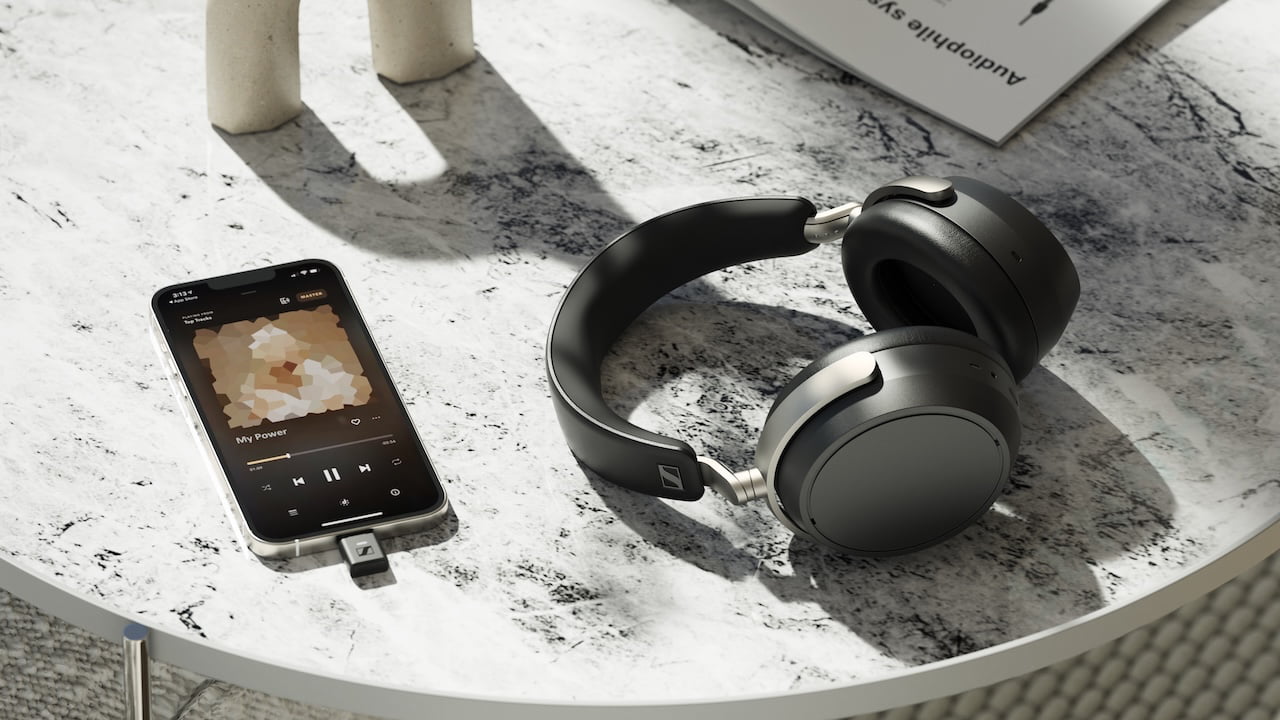



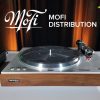

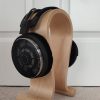



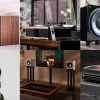



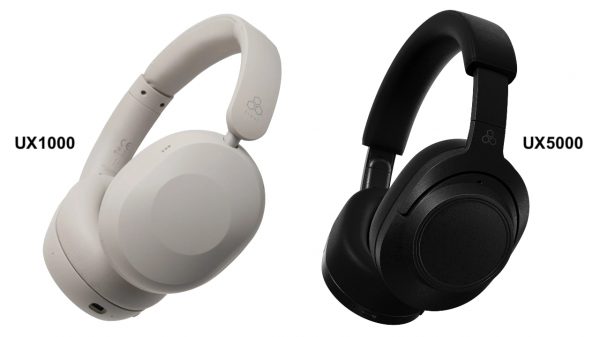




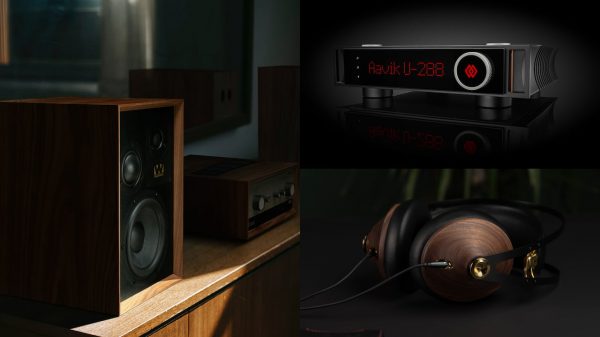
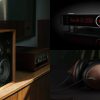
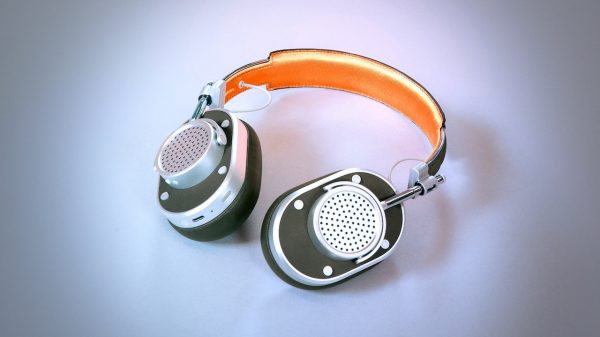
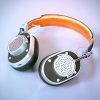











Anton
October 21, 2025 at 3:22 pm
Excellent and thorough review. I’ve read 3 others and this was by far the most detailed and clear.
May have to try these now before buying the Sony.
The dongle looks very useful.